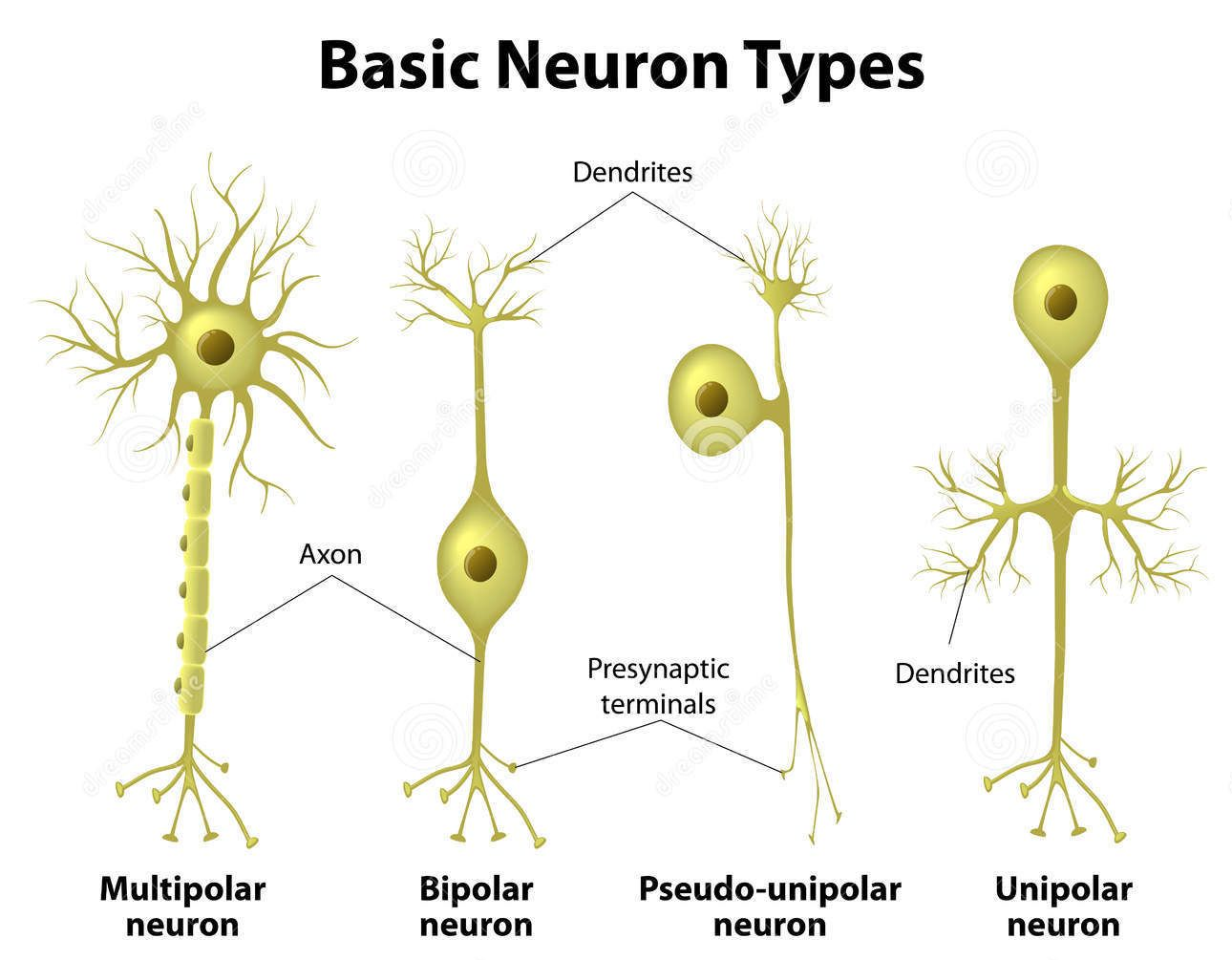Introduction to Nervous System.
Points Covered in this Note:
Organization,
Structure of Neuron,
Neuroglial Cells,
Classification of Nerve Fibers.
Introduction:
The nervous system is one of the smallest and most complex systems in our body.
The nervous system consists of a highly organised network of billions of neurons.
The nervous system regulates body activities by responding rapidly with the help of nerve impulses.
Nervous System coordinates with the endocrine system to control various important aspects of the body and to maintain homeostasis.
Nervous system works by generating “nerve impulses” (action potential) while the endocrine system acts by releasing “neurotransmitters”.
Brain has around 100 billion neurons and 10- to 50-fold more neuroglial cells, and consumes around 20% of the body's energy.
Organization of the Nervous System:
The nervous system is divided into,
The Central Nervous System consists of the brain and spinal cord.
Peripheral nervous system which includes.
Somatic Nervous System.
Peripheral Nervous System.
The autonomic nervous system which consist of:
Sympathetic nervous system
Parasympathetic nervous system.
CNS is the source of our thoughts, emotions and memories.
The Somatic Nervous System is Voluntary in nature and consists of,
Sensory Neurons (Afferent Neurons). (From receptors to CNS).
Motor Neurons (Efferent Neurons.). (From CNS to Skeletal Muscles).
Functions of The Nervous System:
Sensory Functions:
Sensory receptors detect internal stimuli such as change in blood CO2 levels while external stimuli such as a touch.
The sensory information is then carried to the brain and the spinal cord.
Integrative Functions:
Nervous system integrates and analyses the data received from sensory information and makes the appropriate decisions.
The involved neurons are called interneurons.
Motor Function:
The decision taken is executed by sending impulses to the effector organs (Muscles or Glands) through motor neurons.
Histology: Cells of the Nervous System.
Nervous system is made up of two types of cells:
Excitatory Cells: Neurons.;
Non Excitatory Cells: Neuroglial cells.
Neurons are the Fundamental units of the nervous system.
Neurons are capable of generating the impulses which makes them able to perform various functions like sensing, thinking, remembering, controlling gland secretions etc.
Neuroglial cells are supporting cells that support, protect and nourish the neurons.
Neuron:
Each nerve cell i.e. a neuron has three structural components.
Cell body.
Dendrites.
Axon.
Cell body:
It is the main part which contains “Nucleus” and other cell organelles.
Two types of processes that emerge from the cell body are “Dendrites” and “Axon”.
Dendrites:
Highly branched, short and tapering towards the end.
They receive sensory information from sensory organs or other neurons in the form of chemical signals.
The chemical signal is then converted to the electrical signal and transported to the cell body.
Axon:
It is a long thin projection between the cell body and end terminals.
The point where it starts from the cell body is cone shaped and called “Axon Hillock.”
Axon contains mitochondria, microtubules and neurofibrils.
The Cytoplasm of axon is called “axoplasm” and the plasma membrane is called “Axolemma”.
Branches of axons are called “Axon collaterals”.
The axon ends into many fine elongated processes called “Axon Terminals”.
The axon terminal ends look like a bulb and are called “terminal bulbs or synaptic bulbs.”
The gap between two neurons is called “Synapse”.
Synaptic bulbs contain many sacs containing “Neurotransmitter”.
The neurotransmitter is released in the synaptic cavity in response to electric impulse in the axon.
The neurotransmitter gets attached to the receptor present on dendrites of neighbouring neurons and hence transmits the impulse.
A part of the neurotransmitter gets destroyed in synapse by enzymatic action while most is recollected by the neuron, the recollection is called as “neuronal reuptake”.
Classification OF Neurons:
Classified on the basis of processes arising from the cell body.
Multipolar Neuron:
Several dendrites and one axon.
E.g. in the brain and spinal cord.
Bipolar Neuron:
Have one main dendrite and one axon.
E.g. Retina, Inner ear, Olfactory area of brain.
Unipolar Neurons:
Developmental stage, in embryo.
Axon and dendrites fuse to form a single process that divides at a short distance from the cell body.

Neuroglial Cells (Glial Cells):
The Word Neuroglia is derived from: Nerve Glue.
Four types of neuroglial cells are found in the central nervous system;
Astrocytes.
Microglial Cells.
Oligodendrocytes.
Ependymal cells.

Astrocytes:
Forms connection between neurons and blood vessels, imp. Part of BBB (Blood Brain Barrier.)
Star shaped with many processes.
Maintains an appropriate environment for the generation of nerve impulses.
Provides nourishment to the neurons.
Take up extra neurotransmitters.
Forms a part of BBB.
Microglial Cells:
Small with few processes.
Eat microbes and waste, Protection.
A stationary form of macrophages.
Oligodendrocytes:
Smaller than astrocytes, round or oval body.
Insulation and synthesis of Myelin Sheath.
Ependymal cells:
Arranged in a single layer, cuboidal or columnar in shape and many are ciliated.
Secretes and helps in circulation of CSF (CerebroSpinal Fluid).
Schwann Cells:
They encircle the axons of the Peripheral Nervous System and form part of Myelin Sheath.
Helps in regeneration of neurons of the peripheral nervous system.
Satellite Cells:
Small flattened cells arranged around the cell bodies of neurons in ganglia.
Provides support.
